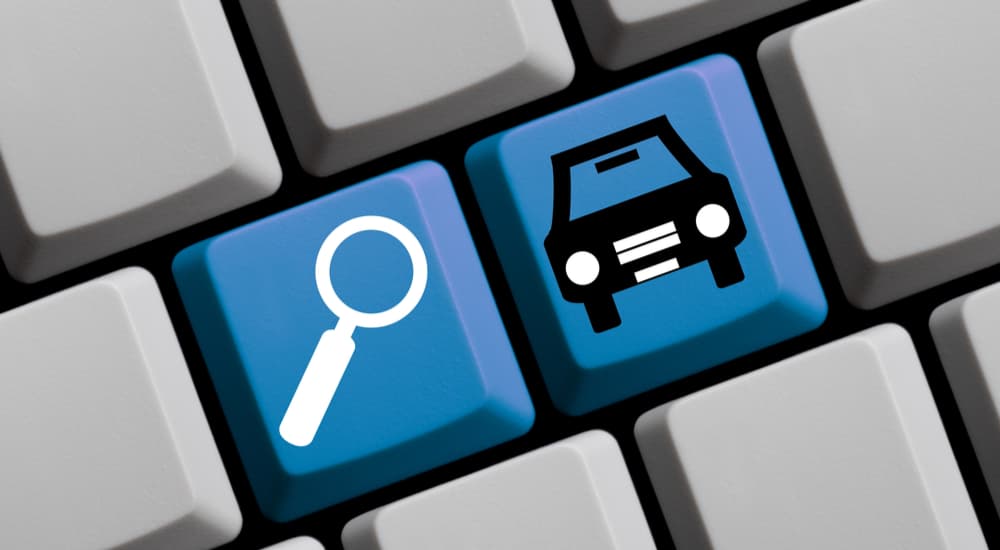
“Show me the money!” Do you remember this classic quote from the 1996 film Jerry Maguire starring Tom Cruise? But what does this have to do with your search for a Texas used Chevrolet dealer? Well, it’s hard not to think about the film with CarFax encouraging customers to say, “Show me the Carfax,” before signing on the dotted line. Here at Parkway Family Chevrolet, we encourage you to do the same!
But what does it mean when you ask for the CarFax? How did the company get started, and why are they held in such high esteem in the automotive industry? You’ve got questions, and as your Chevy authority, we’ve got answers!
CarFax History: How It Started
Ewin Barnett III of Missouri never went to college, but he refused to let his lack of a four-year degree cast a shadow over his future in the tech industry. Instead, he climbed the ranks of a local manufacturing company’s IT department and saw his career flourish. By the 1980s, his passion for data and information technology put Barnett on a unique trajectory.
Barnett recognized a growing issue in the automotive industry, specifically in the used car segment–odometer fraud. It’s relatively simple to remove the odometer casing and roll back the numbers on the wheel to make the car seem like it has less mileage, enticing unsuspecting buyers to pay a higher price or believe that the vehicle has logged fewer miles. Barnett theorized that he could eliminate odometer fraud by collecting the correct data. It all started with Barnett collecting 10,000 mileage readings from state inspection records.
As Barnett perfected his process and data collection, he set out to expand the company and make CarFax into a full-time career. Over the next ten years, he did precisely that as CarFax added more and more states to its database, eventually receiving automobile records from all 50 states by the early 1990s. CarFax hit its first milestone in 1994, with 100 million records accounted for in its database.
Today, CarFax receives data from over 131,000 sources throughout the United States and Canada. These sources include state inspection agencies, police departments, fire departments, automotive auctions, collision repair centers, and more. These sources are responsible for the 28 billion records (and counting) that the company oversees from its headquarters in northern Virginia.
Barnett’s initial goal for the company, which still stands today, was “to be the leading source of vehicle information for buyers and sellers of used cars.” With CarFax’s billions of accessible records, it’s no surprise that CarFax is the most comprehensive vehicle history database in North America. Mission accomplished.

CarFax: How It Works
Every vehicle has a unique thumbprint known as its vehicle identification number or VIN, which is vital for accessing the CarFax report. The VIN is easy to find and is printed on your insurance card and registration, which makes finding information on your current vehicle incredibly easy. But how do you find the VIN on a car that isn’t yours? It’s easy when you know where to look.
The VIN is usually printed on the lower-left corner of the dashboard on the driver’s side. This location makes the VIN visible from the car’s exterior by looking through the windshield, which means you can easily snap a picture of the VIN or jot the numbers down. You’ll also find the VIN printed on a sticker on the driver’s side door jamb and the front of the engine block, both of which require access to the vehicle.
Once you have the VIN, it’s time to visit the CarFax website. By inputting the 17-character number, the tool instantly generates a report (that’s right, there’s no delay). As a result, you’ll have access to vital information that can help you decide if the used car is worth the investment or if it’s time to continue your search.
CarFax: What It Shows
With over 131,000 sources constantly submitting data to CarFax, there’s no shortage of available information. For example, motor vehicle agencies in America send CarFax information on stolen vehicles, ownership transfers, lien information, registration records, manufacturer buybacks, lemon designations, certified odometer readings, and branded titles with salvage, junk, and flood designations. This information helps potential buyers identify odometer fraud and learn more about the vehicle’s ownership, accident, and maintenance history. Since CarFax gets similar information from Canadian provincial motor vehicle agencies, you can also see cross-border activity.
Service and maintenance facilities, collision repair centers, and automotive recyclers also send data to CarFax. This data helps potential buyers identify accidents, repairs, and maintenance issues. For example, automotive recyclers report when someone requests recycled parts for a repair. Why is this a concern? It’s a red flag because it can signify major maintenance repairs or accidents that the driver did not report to the insurance company or local law enforcement agency.
You’ll also find additional information from manufacturers, law enforcement agencies, car dealerships, import and export companies, and extended warranty companies. For example, manufacturers submit data on open recalls, certified pre-owned models, and courtesy buybacks or lemons. Fire departments and law enforcement agencies also provide vital information, including accident involvement, fire or flood damage, and stolen vehicles.

CarFax: The Buyback Guarantee
While CarFax has 28 billion records (and counting), the organization doesn’t overstate its abilities. It doesn’t promise that it can provide a comprehensive history of every vehicle in North America and that honesty is something to be valued. After all, to err is human, and the last time we checked, individuals were still running the local department of motor vehicles, fighting fires, responding to accidents behind the badge, and manning the engine bays at the local autobody shop.
CarFax doesn’t let human nature stand in the way of the service it delivers. Instead, CarFax gives buyers more confidence in their purchase and the courage to shop off the used lot with the exclusive CarFax Buyback Guarantee. The guarantee reduces the risk of buying a used vehicle by safeguarding your purchase if the report fails to include an issue you discovered after your purchase. For example, suppose you find that your used car has a branded title with a salvage designation, which wasn’t included in the CarFax report. In that case, you can submit a claim to CarFax for the vehicle’s purchase price. Once CarFax verifies the claim, the company may repurchase the car for the full purchase price.
Show Me the CarFax!
In the past, buying a used vehicle carried a significant risk because you only had the information you were given or what you could see for yourself. Even then, only a savvy individual could hear a potential issue with the engine or know that the mismatched paint overspray in the trunk was a sign of repair. There was no guarantee of the vehicle’s history, which meant taking a massive leap of faith, a tough decision anytime money is involved.
Fortunately, CarFax levels the playing field as the leading source of vehicle history information for buyers and sellers throughout North America. Today, you don’t need a mechanic’s ear to know the used vehicle you’re interested in has a long history of engine trouble. Instead, all you have to say is, “Show me the CarFax,” and you’ll find all the information you need to have confidence in your purchase and peace of mind behind the wheel.




